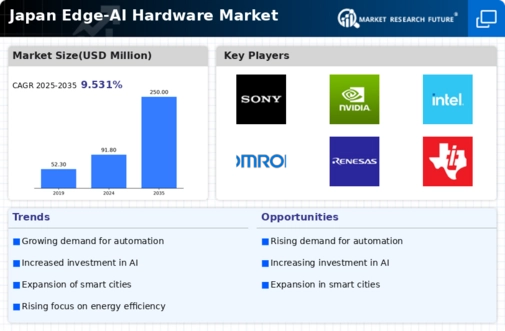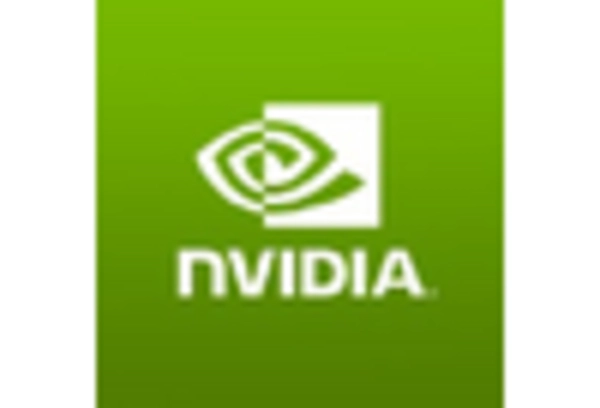Integration of AI in IoT Devices
The integration of artificial intelligence (AI) into Internet of Things (IoT) devices is a significant driver for the edge ai-hardware market in Japan. As IoT applications proliferate across various sectors, the need for intelligent edge devices that can analyze data locally becomes paramount. This integration allows for enhanced functionality, such as predictive maintenance and automated responses, which are essential for industries like healthcare and transportation. The market is expected to witness a growth rate of around 20% as more companies adopt AI-enabled IoT solutions. This trend not only improves operational efficiency but also fosters innovation, making the edge ai-hardware market a focal point for technological advancement in Japan.
Advancements in Semiconductor Technology
Advancements in semiconductor technology are significantly influencing the edge ai-hardware market in Japan. The development of more efficient and powerful chips enables edge devices to perform complex AI computations locally, reducing reliance on cloud infrastructure. This technological evolution is crucial for applications requiring low latency and high processing power, such as autonomous vehicles and smart manufacturing systems. The market is projected to grow by approximately 16% as semiconductor manufacturers continue to innovate and produce specialized chips tailored for edge computing. These advancements not only enhance performance but also contribute to energy efficiency, making edge ai-hardware solutions more attractive to businesses across various sectors.
Growing Focus on Data Privacy and Security
In the context of the edge ai-hardware market, the growing focus on data privacy and security is becoming increasingly relevant in Japan. With the rise of data breaches and cyber threats, organizations are prioritizing the implementation of secure edge devices that can protect sensitive information. This trend is particularly pronounced in sectors such as finance and healthcare, where data integrity is paramount. As a result, the demand for edge ai-hardware that incorporates advanced security features is expected to rise. The market may see a growth rate of around 12% as companies seek to comply with stringent regulations and safeguard their data assets, thereby enhancing the overall trust in edge computing solutions.
Rising Demand for Real-Time Data Processing
The edge ai-hardware market in Japan experiences a notable surge in demand for real-time data processing capabilities. Industries such as manufacturing and logistics are increasingly reliant on instantaneous data analysis to enhance operational efficiency. This trend is driven by the need for timely decision-making, which is critical in competitive environments. As a result, the market for edge ai-hardware is projected to grow at a CAGR of approximately 15% over the next five years. Companies are investing in advanced edge devices that can process data locally, reducing latency and bandwidth costs. This shift towards real-time analytics is likely to propel the edge ai-hardware market forward, as organizations seek to leverage data for improved performance and innovation.
Government Initiatives Supporting AI Development
Government initiatives in Japan aimed at promoting AI development play a crucial role in driving the edge ai-hardware market. The Japanese government has launched various programs to support research and development in AI technologies, which includes funding for startups and established companies. These initiatives are designed to enhance Japan's competitiveness in the global AI landscape. As a result, the edge ai-hardware market is likely to benefit from increased investment and collaboration between public and private sectors. The government’s commitment to fostering a robust AI ecosystem is expected to lead to a market growth of approximately 18% over the next few years, positioning Japan as a leader in edge computing technologies.
















Leave a Comment